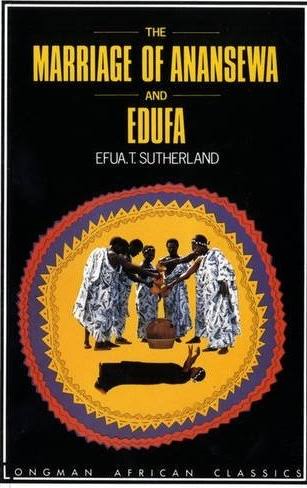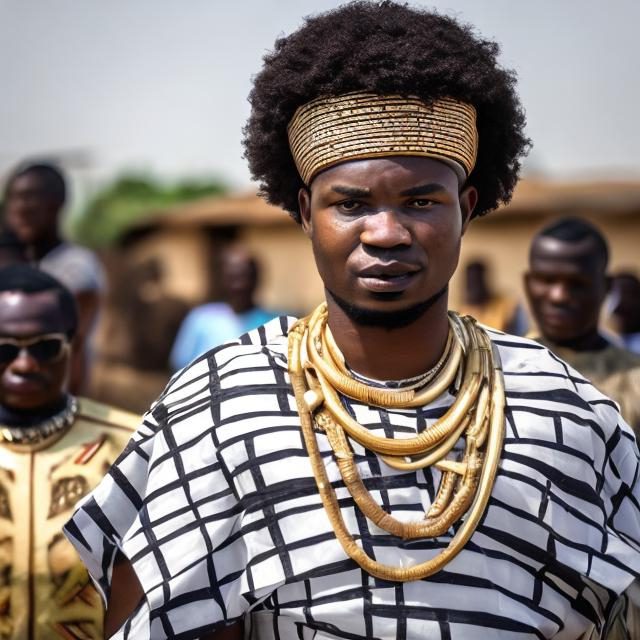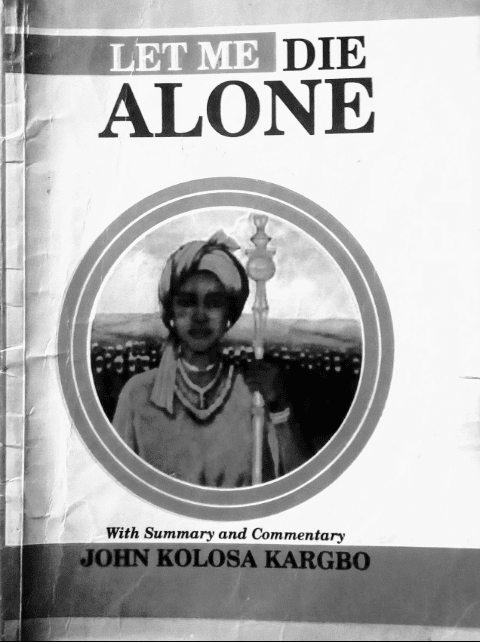
Efua T. Sutherland’s comedy, The Marriage of Anansewa, is based on the Akan storytelling tradition known as Anansesem, which tells tales of the exploits of the cunning spider Ananse.
The stories of Ananse are akin to those of legendary animals peculiar to cultures in other parts of the world. Among the Yoruba people, for example, it is the tortoise who enjoys this kind of attention in folktales. Like the spider in Akan folktales, the tortoise always wriggles himself with his wily tricks out of the troubles he created for himself in the first place.
We have written blog posts on the plot summary, themes, and characterization in The Marriage of Anansewa. This post is a kind of revision of these posts. You may also find things we might have left out in our previous posts. So, what is The Marriage of Anansewa about?
What We Know
The Marriage of Anansewa tells the story of how Ananse, a wretched man, becomes rich by means of fraudulent strategies. The clever man figures that he could get out of penury if he properly utilises the prospects the marriage of his only daughter offers. And this he implements successfully to the last letter.
Anansewa, his daughter, is a student at E. P. Secretariat School, and as of the time the play begins, she has been at home for about two weeks due to her father’s inability to pay her school fees.

Ananse then takes advantage of his daughter’s beauty and takes her picture on a trip to four different chiefs. He promises each one of them the hand of his daughter in marriage. When he returns from the trip, he dictates letters to the chiefs for Anansewa, who is oblivious to the fact that she is the “object of interest” her father assures the chiefs about.
When the cat is let out of the bag, Anansewa protests her father’s intent to “sell her like some parcel to a customer.” Her father, however, tells her otherwise and how necessary it is for them to get out of abject poverty.
Ananse sparks his daughter’s interest in one of the chiefs, Chief-Who-is-Chief, whom he describes as “finely built, glowing black, large-eyed, handsome as anything, courageous, and famous.”
It is Chief-Who-is-Chief who pays Anansewa’s school fees. She becomes intrigued and eventually falls in love with the chief.
Ananse also receives gifts from all the other chiefs, and these significantly improve his lifestyle. He renovates his house and changes his wardrobe.
All the chiefs are interested in marrying Anansewa, and this puts her father in a dilemma. He invites Aya, his mother, Ekuwa, his aunt, and Christina Yamoah, the proprietress of the Institute for Prospective Brides, to prepare Anansewa for the outdooring ceremony.
While at it, he decides to fake Anansewa’s death. He abruptly halts the ceremony to facilitate his next plan. He sends his mother and aunt home to prevent them from getting in the way of his scheme.
To excuse them, he claims that enemies have set fire to their hope, their cocoa farm at their home town of Nanka. He tasks them with the responsibility of getting things in order at Nanka. He then connives with Christina Yamoah, also Christie, to fake Anansewa’s death.
The duo announce Anansewa’s death. The news reaches the chiefs, and they send their condolences with gifts. They inadvertently disclose their motives for wanting to marry Anansewa. The last messengers to arrive are from Chief-Who-is-Chief. It is revealed that he genuinely wanted to marry Anansewa out of true love and devotion.
Ananse then enters a trance and invokes Anansewa to come back to life. Anansewa awakens and claims she could hear Chief-Who-is-Chief calling her. The play ends on a happy note with a win-win situation for both father and daughter. Ananse gets rich while his daughter gets the love of her life.

That’s what we know about the play. What do you know about Efua Theodora Sutherland’s The Marriage of Anansewa? Let’s compare notes. Let us know in the comment section. Now, let’s move on to the dramatic devices.
What are the dramatic devices in the play?
In our post, Dramatic Techniques in “The Marriage of Anansewa,” we have briefly looked into the storytelling technique, the spider’s web, the use of music and dance, and audience participation. In this section, we shall look into mime, allegory, and the play-within-the-play technique.
Mime
There is a heavy use of mime by the players in the play. They mime songs. Take, for example, songs like Odum’s Child, mimicked by the Storyteller, with two women among the players.
Mime effectively emphasises the stories within the songs. In addition, it portrays specific actions within the play, such as the post office staff during the opening scene and the postman checking addresses on letters against those on the streets.

Allegory
The Marriage of Anansewa can be seen as an allegory for Ghana post-independence. It symbolises the country’s policy of non-alignment with other nations.
In this interpretation, Anansewa embodies Ghana, Ananse represents the leader (specifically, Kwame Nkrumah), and the chiefs symbolise the international community.
Ananse’s actions, deceiving the chiefs while receiving gifts and money without creating conflict, illustrate the idea that it’s acceptable to seek aid from other nations by offering trade alliances without committing until the motives of the donor nation are understood and tested.
Play-within-a-play Technique
Another noticeable dramatic technique in Sutherland’s The Marriage of Anansewa is the play-within-a-play technique (also known as mise en abîme). A good instance of this is the Akwani and Akosua episode, which stresses the idea that a suitor has no claim over his bride-to-be until he performs the traditional act of placing the head-drink.
Fine, that’s all about dramatic devices in The Marriage of Anansewa. Let us know in the comment section if there are things we have left out in this section or in the specific post addressing the dramatic techniques. We appreciate your contributions.
Themes in the Marriage of Anansewa
Elsewhere, we have a post written about the themes in Efua Theodora Sutherland’s The Marriage of Anansewa. There, we discussed the themes of poverty and ambition, wit and cunning, love and materialism, matchmaking, and African marital tradition, respectively.
If there is anything we left out, it is the very fact that Ananse is greedy and self-centred. So, in this very instance, we are going to discuss the themes of greediness and the triumph of love.
Theme of Greediness
The theme of greediness is exemplified by at least two characters in the play, the most prominent of which is Ananse. The deceitful schemes in the play boil down to Ananse’s greediness and self-centeredness.
Spurred by greed, Ananse travels around the place with pictures of his well-prepared daughter, which he takes to four prominent chiefs from different parts. His self-centeredness and greed put his daughter in an embarrassing position where she is a sought-after item for the highest bidder.

To keep his ploy straight, Ananse has to deceive a lot of characters in the play, including his mother and aunt. He deceives the chiefs, whom he gives the impression that each one of them is the only suitor his daughter has. He also conveniently deceives them about Anansewa’s pretended death, which he devises to ward off three of the chiefs.
A clearer indicator of Ananse’s greed is rooted in the fact that he has to promise the hands of his daughter in marriage separately to the four chiefs when he could have conveniently promised them to one of the chiefs without having to extort the others. This way, Ananse would still have been able to achieve his planned upliftment from the jaws of poverty. However, his greed would not allow him to commit to just a chief from the very start.
Another character who is portrayed as greedy in The Marriage of Anansewa is the mason. He makes the best use of the work given to him by Ananse.
Together with the painter and the carpenter, he is supposed to spend three weeks on the job. However, he insists that the work duration is going to be ten weeks instead. His deceit is fuelled by his greed—apparently, the fact that double work time means double money.
One thing that can be deduced from The Marriage of Anansewa is that greediness is the catalyst for the prevailing deceit in the play.
Theme of the Triumph of Love
In The Marriage of Anansewa, we witness a triumph of love. Regardless of Ananse’s antics, it is understandable that Ananse wants the best love life for his daughter: a rosy future for his daughter. This implies that Ananse uses one stone to kill two birds. One is that he is able to satisfy his financial needs. Two, he is able to match his daughter with a man who has her best interest at heart. He ensures she marries the man she loves.
Anansewa agrees to her father’s plan because she wants to marry Chief-Who-Is-Chief. She’s attracted to him because of his looks and strength. Her love for him makes her willing to go along with a fake death to win him over.
In the end, Ananse’s trickery helps the young couple marry for real love. Ananse fakes being in a trance, pours a drink sent by Chief-Who-Is-Chief, and calls on his ancestors to ‘resurrect’ his daughter. Love triumphs in the end.
 WHATSAPP: Click HERE to join the new Literature PADI WhatsApp group to receive latest updates on your phone and for further literary discussions!
WHATSAPP: Click HERE to join the new Literature PADI WhatsApp group to receive latest updates on your phone and for further literary discussions!










Thanks a lot.It was really helpful 👍👍💯💯
Comments are closed.